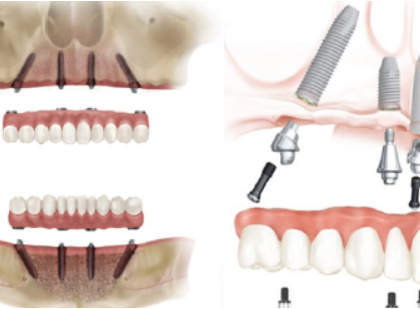Introduction
At our professional dental clinic, we understand the concerns and questions that arise when considering a root canal treatment. Root canals have been a topic of debate among patients, and it’s important to have accurate information to make an informed decision about your dental health. In this comprehensive article, we will discuss when a root canal is truly necessary, debunking myths and providing you with the knowledge you need to understand the procedure and its importance.
Understanding Root Canals
A root canal is a dental procedure that involves removing the infected or damaged pulp from the inside of a tooth. The pulp is the soft tissue containing nerves, blood vessels, and connective tissues that keep the tooth healthy. When the pulp becomes infected or inflamed due to severe decay, cracks, or trauma, it can lead to excruciating pain and further dental complications if left untreated.
Signs and Symptoms
Persistent Toothache:
A severe and persistent toothache can be an indication that the pulp inside the tooth is infected or inflamed. When biting or putting pressure to the damaged tooth, the pain may intensify.
Sensitivity to Temperature: If you experience heightened sensitivity to hot or cold foods and beverages, it could be a sign that the nerves inside the tooth are affected.
Gum Inflammation:
Swollen and tender gums around the tooth may indicate the presence of an infection. It is essential to address this promptly to prevent further spread of the infection.
Discoloration:
Discoloration of the tooth, particularly a darkening or graying appearance, can be an indication that the pulp is damaged or dead.
Prolonged Sensitivity:
Lingering sensitivity to sweets or prolonged discomfort after consuming sugary foods may suggest an underlying issue with the tooth’s pulp.
When Root Canal Treatment is Necessary
Infection or Abscess:
If the tooth pulp is infected, a root canal treatment is necessary to remove the infected tissue, clean the canals, and prevent the infection from spreading. Failure to address this promptly can lead to the formation of an abscess, which can be extremely painful and may require more extensive treatment.
Deep Decay:
When decay penetrates deep into the tooth, reaching the pulp, a root canal becomes essential to save the tooth from extraction. Removing the decayed portion and restoring the tooth’s structure through a root canal procedure can restore its functionality and prevent further decay.
Cracked or Damaged Tooth:
A tooth with a crack or fracture that extends into the pulp requires a root canal to alleviate pain, repair the damage, and prevent infection.
Trauma or Injury:
If a tooth experiences significant trauma or injury, it can damage the pulp, leading to inflammation or infection. A root canal may be necessary to save the tooth and restore its health.
The Root Canal Procedure
Examination and Diagnosis:
The first step in determining the necessity of a root canal is a thorough examination by a qualified dentist. They will assess the tooth’s condition, perform tests, and review X-rays to determine the extent of the damage.
Administering Local Anesthesia:
Before the procedure, local anesthesia is administered to ensure the patient’s comfort throughout the treatment. The dentist will ensure the area is completely numb before proceeding.
Accessing the Pulp:
The dentist will create a small access hole in the tooth, allowing them to reach the infected or inflamed pulp.
Cleaning and Disinfecting:
Specialized dental instruments are used to clean the canals thoroughly, removing the infected pulp and any debris. The canals are then disinfected to eliminate bacteria and reduce the risk of reinfection.
Filling and Sealing: Once the canals are clean and dry, they are filled with a biocompatible material called gutta-percha. This material seals the canals and prevents further infection.
Restoring the Tooth:
In most cases, a tooth that undergoes a root canal treatment will require a dental crown to restore its strength, structure, and appearance. The crown is customized to match the natural color and shape of the tooth.
Root Canal mazing benefits
Pain relief:
One of the primary benefits of a root canal is the relief of severe tooth pain. The procedure aims to eliminate the source of the pain, which is often caused by an infection or inflammation within the tooth.
Preservation of natural teeth:
By undergoing a root canal, you can save your natural tooth from extraction. Preserving your natural tooth is advantageous because it maintains proper chewing function, helps preserve the alignment of surrounding teeth, and prevents adjacent teeth from shifting.
Improved oral health:
Root canal treatment eliminates the infection or inflammation within the tooth, preventing it from spreading to other areas of the mouth. By eliminating the source of infection, you protect your overall oral health and reduce the risk of developing additional dental issues.
Aesthetic benefits:
Losing a tooth can have negative aesthetic effects on your smile. Root canal treatment allows you to maintain the appearance of your natural tooth, ensuring a more attractive and confident smile.
Efficient chewing:
Since root canal treatment restores the functionality of the affected tooth, you can chew and bite properly without discomfort. This helps ensure that you can enjoy a balanced diet and maintain proper nutrition.
Long-term cost savings:
Opting for a root canal is often more cost-effective in the long run compared to extracting a tooth and replacing it with a dental implant or bridge. Root canal treatment can help you avoid the expenses associated with tooth replacement options.
Conclusion
A root canal treatment becomes necessary when the tooth’s pulp is infected, inflamed, or damaged. Recognizing the signs and symptoms, such as persistent toothache, sensitivity, and gum inflammation, is crucial in identifying when a root canal is truly needed. If you experience any of these symptoms, it is vital to consult a qualified dentist who can assess your condition and recommend the most appropriate treatment. Remember, timely intervention with a root canal can save your tooth, alleviate pain, and restore your dental health.





